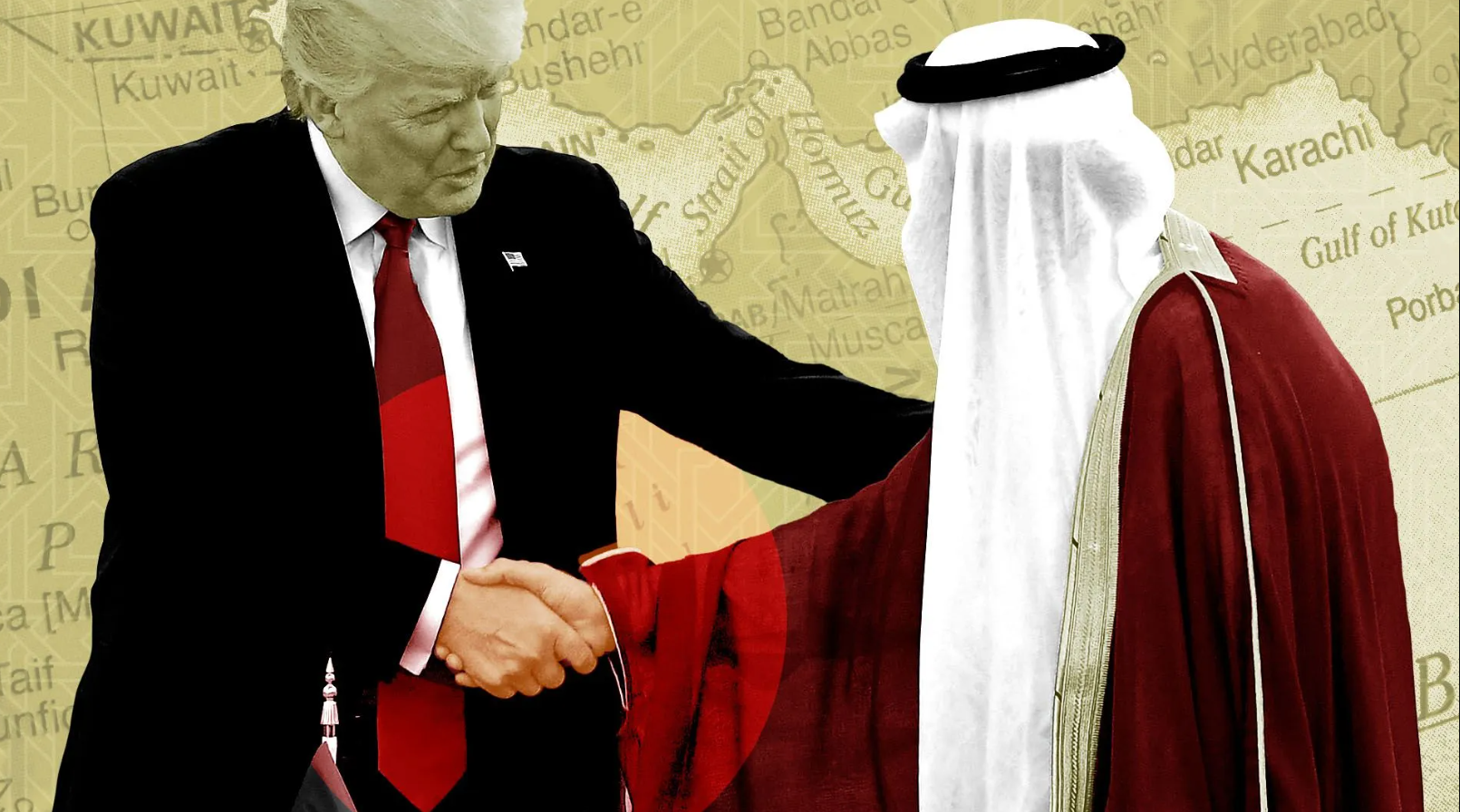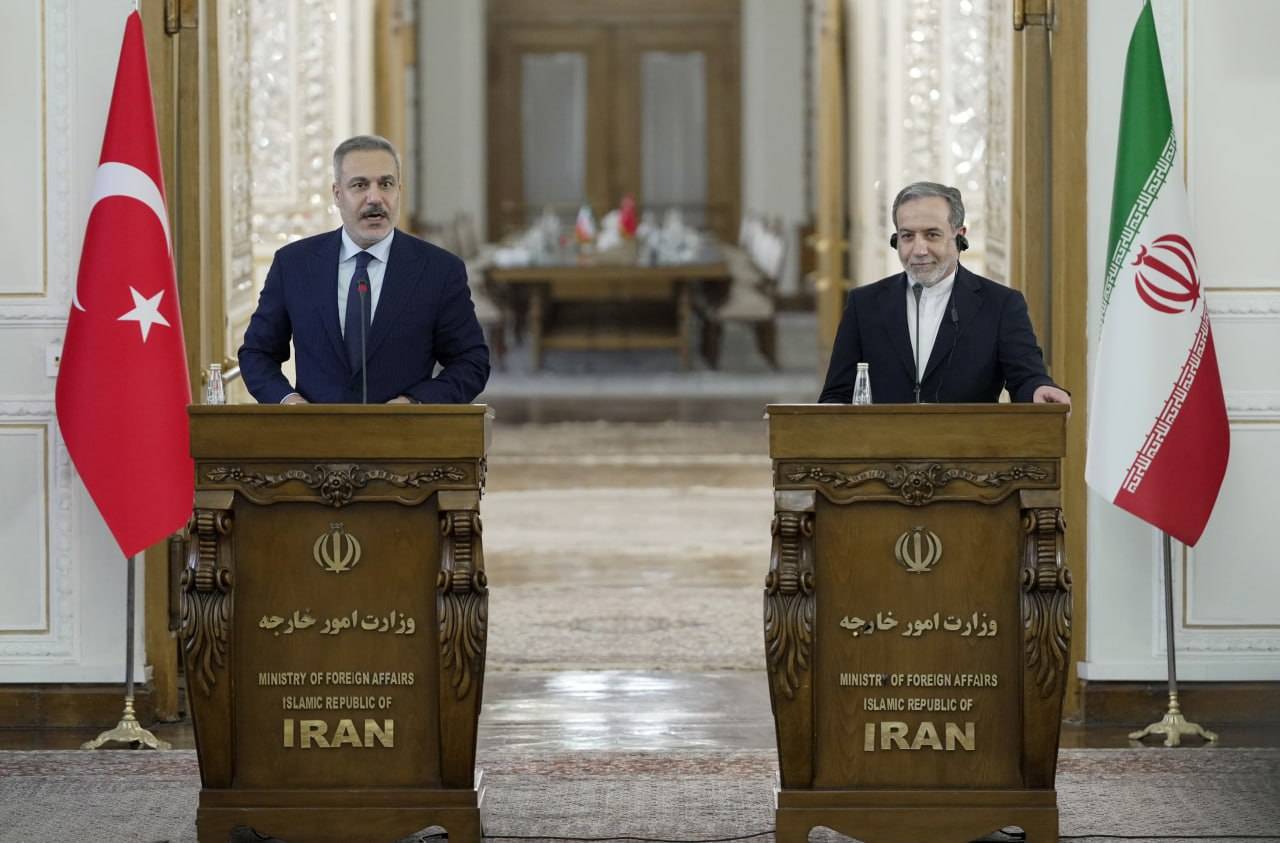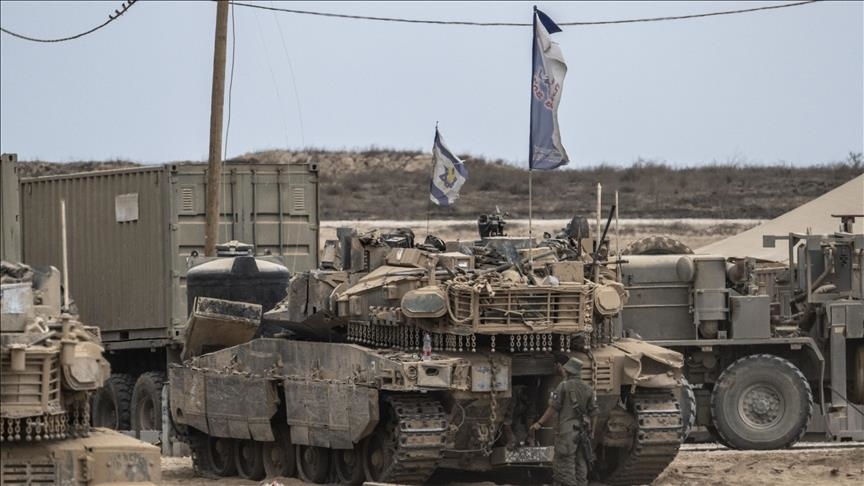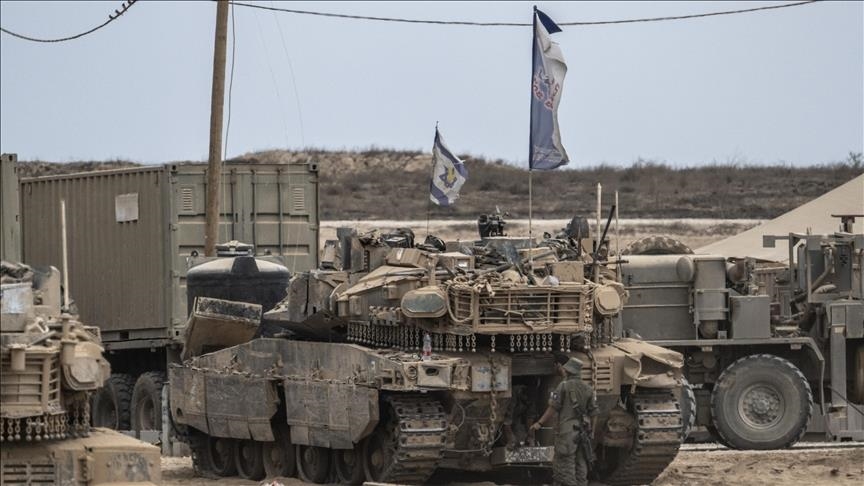Behind Riyadh’s cautious smile and official praise for Donald Trump’s so-called “Comprehensive Gaza Peace Plan,” lies a cluster of contradictions: the sidelining of the Palestinian statehood agenda, the downgrading of Saudi Arabia’s strategic agency, and the quiet expectation that Persian Gulf coffers will bankroll Gaza’s costly reconstruction. For a kingdom now focused on economic transformation and a “grand de-escalation” strategy, Trump’s plan looks less like a peace roadmap and more like the very trap Riyadh has sought to avoid — a high-risk, low-reward venture at the intersection of regional legitimacy and domestic vulnerability.
Iran View 24 – International Desk
On September 29, 2025, Donald Trump unveiled his 20-Point Gaza Peace Plan — a proposal promising an immediate ceasefire, release of hostages within 72 hours, phased Israeli withdrawal, and a “terror-free Gaza” governed by an interim technocratic authority supervised by an international Peace Council chaired by Trump himself.
Arab governments offered cautious words of support, and even the Saudi cabinet praised it as a “comprehensive framework to end the war.” Yet, beneath this diplomatic politeness, the plan — as currently designed — carries a set of structural costs and strategic risks that clash with Saudi Arabia’s long-standing policy and national interests.
The Palestinian State: Riyadh’s Red Line Ignored
For two years of normalization talks, Riyadh’s message has been consistent: without a clear, irreversible path toward a sovereign Palestinian state with East Jerusalem as its capital, recognition of Israel is off the table.
However, Trump’s plan quietly pushes statehood to an undefined future. Governance of Gaza would fall under a technocratic interim administration overseen by the Peace Council, while “statehood discussions” are deferred until after institutional reforms within the Palestinian Authority. No timetable for Israel’s full withdrawal is given.
This formula — ambiguity over sovereignty coupled with indefinite transition — is precisely what Riyadh cannot afford politically or regionally. It undermines its credibility as a custodian of Arab and Islamic causes and exposes it to domestic criticism at a time when public opinion across the Arab world has turned sharply against normalization.
From Policy Driver to Paymaster: Eroding Saudi Agency
The plan introduces a new Peace Council structure, reportedly chaired by Trump with former British Prime Minister Tony Blair as a central figure. All major reconstruction financing and political coordination would run through this council — a heavily American-centric mechanism that effectively sidelines Arab decision-making.
Instead of shaping the regional framework, Saudi Arabia and the UAE would be relegated to the role of financial sponsors of a process they do not control. For Riyadh — which seeks to position itself as a framework-setter in the Palestinian file, not merely a funder — this is a direct loss of agency.
Adding to this unease is the plan’s echo of earlier controversial proposals, such as the GREAT Trust framework circulated in Washington, which envisioned a decade-long international trusteeship and even “voluntary population relocation.” Though the new 20-point version formally rejects forced displacement, the strategic memory of the region does not reset easily; every American or Israeli action in Gaza is now interpreted through the lens of control and demographic engineering.
Erosion of Saudi Agency and the American-Centric “Peace Council”
Trump’s plan introduces a governing structure called the “Peace Council,” chaired by Trump himself and reportedly assigning a central role to Tony Blair. Decision-making on reconstruction and financial coordination would also fall under this body.
In practice, this amounts to shifting the center of gravity from regional stakeholders to an American-centric and personality-driven mechanism—reducing Arab states from active “policy shapers” to passive “financial contributors and political endorsers.”
For Saudi Arabia, this is precisely the opposite of what it seeks. Riyadh wants to be a framework-setter in the Palestinian file — not a mere underwriter of someone else’s design.
Furthermore, the precedent of earlier “multinational trusteeship” ideas for Gaza — notably the controversial GREAT Trust document circulated in Washington — has already eroded Arab confidence and rekindled concerns about potential population transfer schemes. The roots of this suspicion lie in previous reports and policy drafts that explicitly endorsed a ten-year trusteeship and even large-scale voluntary relocation.
Even though the new 20-point proposal formally pledges “no forced displacement,” the region’s political memory does not reset easily. Every American and Israeli move in Gaza is now interpreted through the prism of these earlier blueprints — as part of a broader architecture of control rather than genuine stabilization.
From the Dreams of NEOM to the Reality of Gaza: Fiscal Strain and Vision 2030 Under Pressure
Estimates from the United Nations, World Bank, and the European Union place the total cost of Gaza’s reconstruction between $53 and $70 billion over the next decade, with an initial requirement of about $20 billion in the first three years. Unsurprisingly, Washington’s gaze turns toward the Persian Gulf to foot the bill.
But Saudi Arabia itself is already struggling with rising budget deficits, massive Vision 2030 investments, and declining oil revenues. The Ministry of Finance projects a 245-billion-riyal deficit (roughly $65 billion) for 2025 and 3.3% of GDP for 2026.
A premature commitment to high-cost reconstruction phases under a council where Riyadh has neither veto power nor design authority increases the risk of chronic fiscal drag and the diversion of capital away from core domestic priorities.
In short, while Trump’s plan presents itself as a pathway to peace, for Saudi Arabia it threatens to become a financial and political sinkhole — one that could drain both its budgetary flexibility and its strategic leverage in the very region it seeks to reshape.
The Erosion of Arab Leadership and the Rise of Regional Rivals
The durability of any ceasefire and the transition to the second phase—disarmament and the establishment of a security framework—cannot realistically proceed without close mediation involving Hamas. That mediating role is, in practice, being played by Qatar and Turkey. In both Washington and Tel Aviv, Doha’s diplomacy in the hostage–prisoner channels and its influence over Hamas’s behavioral calculus are already described as central. Reports have even emerged that the Trump team has engaged in quiet back-channel discussions with Riyadh and Abu Dhabi to offer “reassurances” about the potential downsides of a deepening U.S.–Qatar nexus for their regional standing.
For Saudi Arabia, however, the net effect is clear: a diminishing margin of Arab leadership in one of the region’s most symbolically charged arenas, and a more visible strategic rivalry with Doha. The Gaza file—long considered the emotional core of Arab public opinion—now risks turning into a stage where Saudi Arabia’s influence appears secondary to the assertive diplomacy of its smaller Persian Gulf neighbor.
Gaza’s Security Architecture: A U.S.-Centered Force and the “Partner in Occupation” Dilemma
Trump’s Gaza plan proposes the creation of an International Stabilization Force (ISF). Yet regional experience shows that any non-local, externally managed military presence in Gaza faces not only severe legitimacy deficits but also the risk of mission erosion over time. More problematic still, if this force operates under the authority of a U.S.-led Peace Council rather than a neutral, UN-sanctioned framework with broad Arab consensus, the Arab states financing it—including Saudi Arabia—could quickly be cast as “partners in occupation.”
That perception would be politically toxic. For Riyadh, it carries twin dangers: domestically, it risks inflaming public sensitivities around the Palestinian cause; externally, it could deepen symbolic competition with Turkey and Iran, both of which have positioned themselves as defenders of the Palestinian narrative. The Kingdom can ill afford such a reputational burden at a moment when it seeks to project moral and strategic balance across the Islamic world.
Incompatible with Saudi Arabia’s “Grand De-escalation” Doctrine
Since early 2023, Riyadh’s overarching regional strategy has been defined by “the grand de-escalation”—a pivot toward détente with Iran and a prioritization of economic reconstruction and investment over confrontation. Any arrangement in Gaza that is perceived as an American–Israeli custodianship risks triggering backlash from the “Resistance Axis” constituencies across Yemen, Iraq, Lebanon, and beyond. Such reactions could complicate Saudi Arabia’s maritime and energy security calculations, as well as its flagship Red Sea development projects.
Even if Washington simultaneously pursues containment efforts against Ansar Allah (the Houthis), the broader optics of a U.S.-engineered trusteeship in Gaza would likely heighten, not reduce, regional tensions. In short, Trump’s 20-point plan is potentially escalationary, not de-escalatory, and therefore stands at odds with Riyadh’s core requirement: a stable regional environment in which the Kingdom can focus on realizing its Vision 2030 ambitions.
Structural Fragility of the Plan: A High-Stakes Gamble for Riyadh
The subsequent phases of Trump’s 20-point Gaza plan remain undefined—particularly regarding the timeline for Israeli withdrawal and the parameters of demilitarization. Several regional outlets have already reported a slowdown in implementation and warnings from key actors about the plan teetering “on the edge of collapse.”
For Saudi Arabia, this uncertainty translates into asymmetric exposure: the Kingdom could end up carrying the financial and political commitments of participation without obtaining any tangible strategic dividends—such as a credible peace horizon or stable governance structure in Gaza. This is the worst-case scenario for Riyadh: paying the reputational and financial costs of involvement in a high-visibility peace project that may never deliver concrete results.
Such an outcome would not only undermine Saudi Arabia’s external posture as a pragmatic stabilizer but also risk domestic legitimacy erosion, particularly in a region where the Palestinian issue remains a moral touchstone for Arab public opinion.
The Domestic Legitimacy Equation: When Regional Optics Meet Internal Constraints
Recent public opinion surveys across the Arab world show a sharp decline in support for unconditional normalization with Israel—dropping to below 13 percent in most surveyed states—while solidarity with the Palestinian cause has surged. In Saudi Arabia, this dynamic is no different. Support for Arab engagement is conditional upon protecting Palestinian rights, not subordinating them to American or Israeli frameworks.
Any roadmap that keeps the question of Palestinian statehood vague, while placing a heavy fiscal and political burden on Riyadh, risks triggering domestic discontent and opposition from within the Kingdom’s own social and religious constituencies. When combined with growing budgetary pressure and the massive capital requirements of Vision 2030, the political cost-benefit calculus of Trump’s Gaza peace initiative becomes even less favorable.
A Strategic Equation Weighted Toward Cost, Not Gain
Unless Trump’s 20-point framework evolves into a clearly time-bound, legally guaranteed pathway to Palestinian statehood, unless its governance mechanism becomes genuinely internationalized and depersonalized rather than U.S.-centric, and unless its financial architecture links Persian Gulf funding to real decision-making leverage and accountability, Saudi Arabia’s balance sheet of this initiative will remain cost-heavy and benefit-light.
Riyadh’s initial endorsement of “ending the war” is understandable—peace, after all, aligns with the Kingdom’s regional doctrine of de-escalation. But the logic of Saudi national interest dictates a firmer conditionality: without unlocking these three structural constraints—
a) a guaranteed timeline for Palestinian statehood;
b) an authentically multilateral transitional authority and stabilization force; and
c) transparent, jointly governed financial mechanisms—
the Trump peace plan represents less an opportunity for the Kingdom than a strategic trap: costly, uncertain, and potentially destabilizing.






